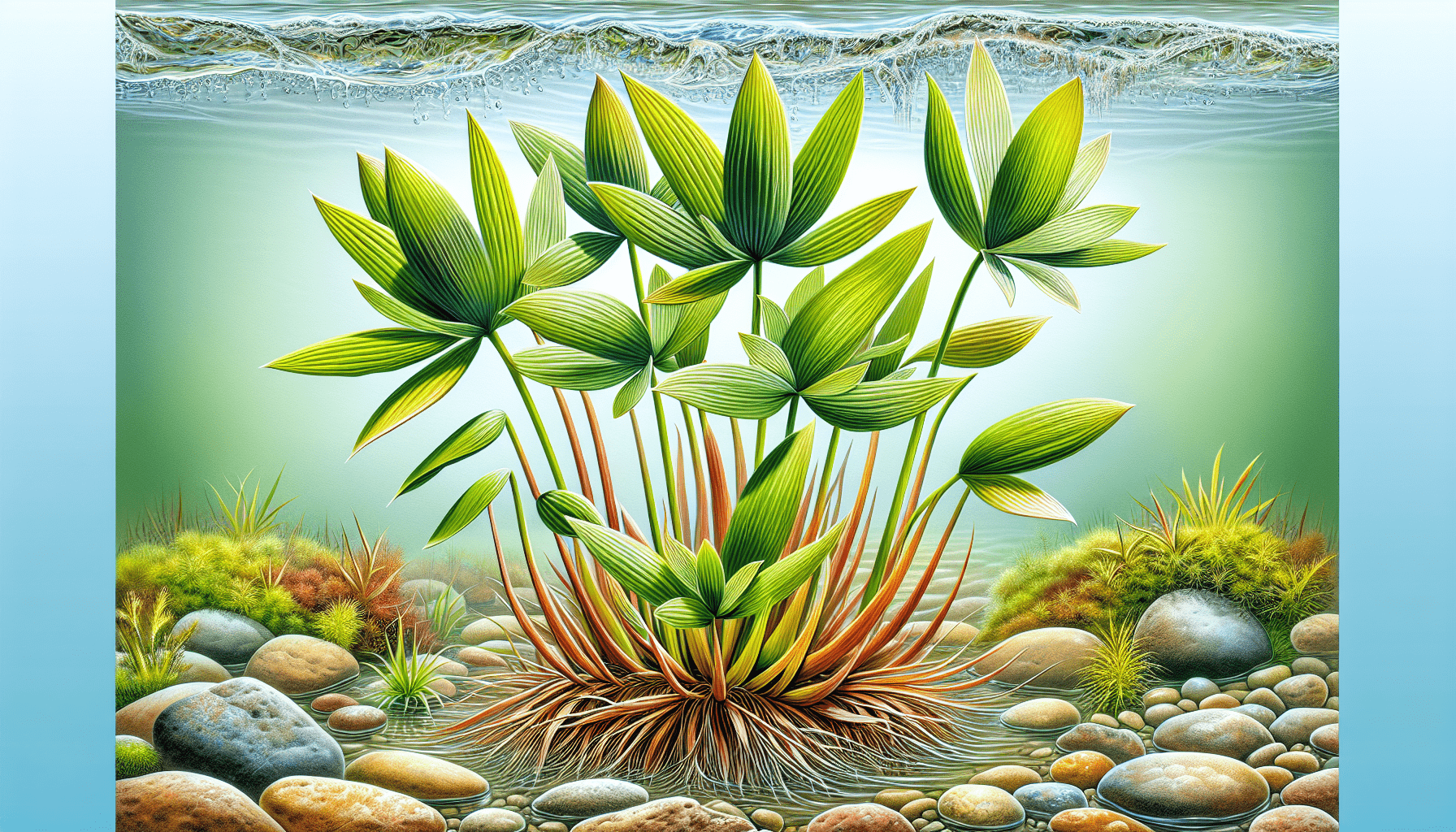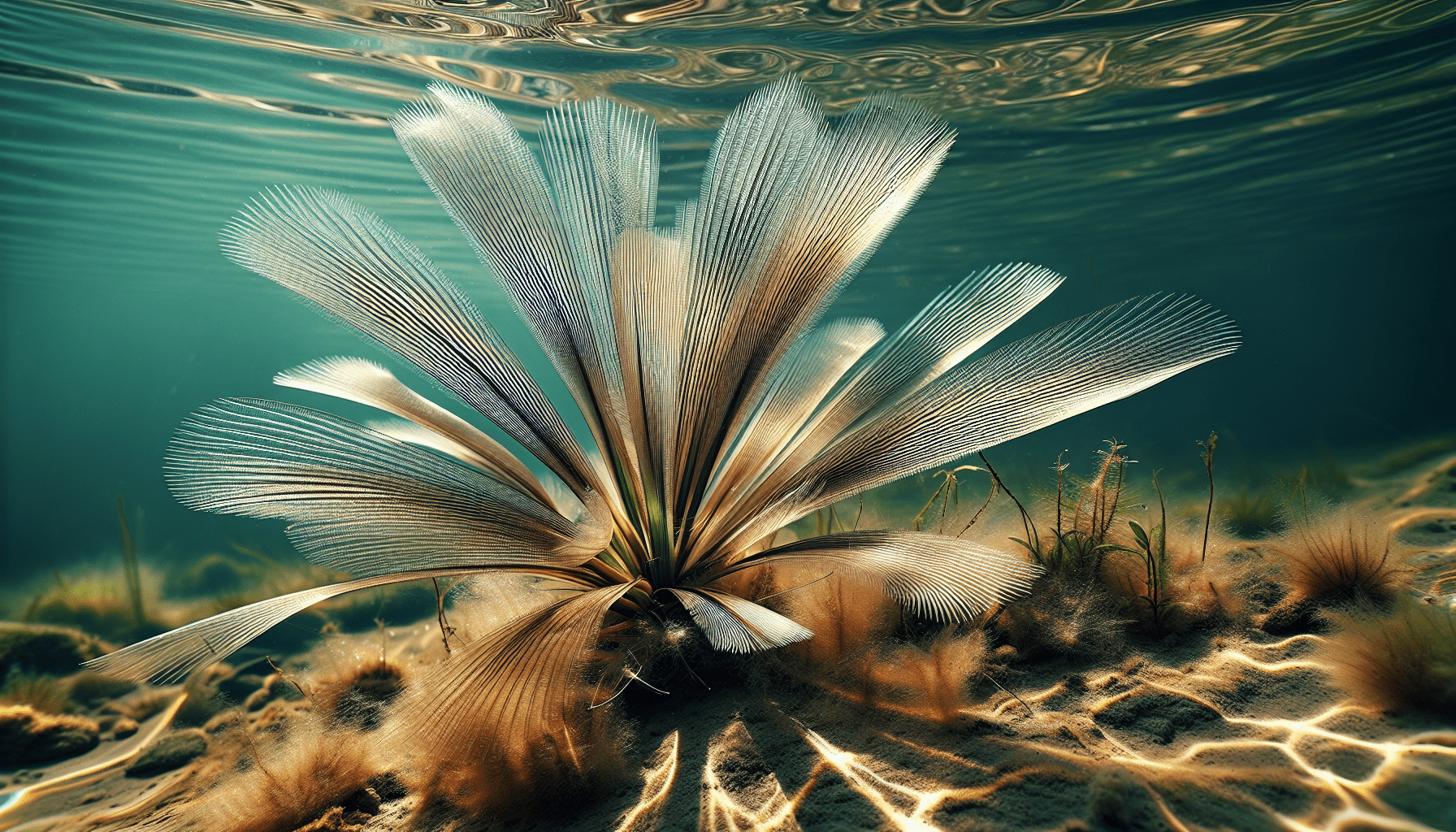Plunging into the world of botany, you may find yourself fascinated by the sheer diversity of plant species that have adapted and thrived in various environments. One intriguing example is the aquatic plant variable flatsedge. This plant, part of the Cyperaceae family and officially known as Cyperus difformis, shows spectacular resilience in wet environments, making it a remarkable specimen in aquatic flora. This article unravels the mystery surrounding this aquatic plant, providing you with a comprehensive understanding of its habitat, growth patterns, and ecological importance.

Understanding Variable Flatsedge
The Variable Flatsedge is a fascinating member of the aquatic plant kingdom, exhibiting a myriad of features that have intrigued botanists and ecologists for years. This comprehensive article is intended to provide an in-depth exploration of this unique plant species.
Definition of Variable Flatsedge
The Variable Flatsedge is a perennial grass-like plant that’s part of the Cyperaceae family. It is typically found in wet, marshy areas, such as the edges of ponds, lakes, and streams. Its scientific name is Cyperus difformis. While its visual characteristics can vary, the plant is commonly characterized by its thin, thread-like leaves, and its distinctive seed heads that form clusters of small, rounded spikelets.
Scientific classification of Variable Flatsedge
In the realm of scientific classification, Variable Flatsedge belongs to the Plantae kingdom, descending from the Tracheobionta superdivision. As a Spermatophyte, it falls into the Magnoliophyta division, marking it as a flowering plant, with a monocot mitosis type indicative of single seed leaves. Within the Cyperales order, it finds its place in the Cyperaceae family, asserting its status as a type of sedge, and carries the scientific name Cyperus difformis.
Common names of Variable Flatsedge
While its scientific name is Cyperus difformis, the plant is commonly referred to by several other names. These include Variable Flatsedge, a name reflective of the species’ variable physical characteristics, Smallflower Umbrella Sedge, indicative of the small flower umbels it produces, and Dirty-Dora, likely rooted in the plant’s propensity to thrive in damp, marsh-like environments.
Habitat of Variable Flatsedge
Preferred environment of Variable Flatsedge
Variable Flatsedge essentially prefers wet, marshy environments. This aquatic species flourishes best on the margins of ponds, lakes, and streams, in irrigated fields, and occasionally in drier locations. The plant establishes itself most effectively in damp or water-logged soils, particularly clay or loam.
Geographic distribution
Cyperus difformis can be found in various parts of the world. Originally native to tropical and subtropical regions, the Variable Flatsedge has since expanded its reach, now evident throughout the warmer-temperate climates, including North and South America, Europe, Asia, Africa, and northern Australia.
Prevalence in different climates
This plant species exhibits a remarkable capacity to adapt to different climates, primarily in warm temperate zones. In cooler climates, it may behave as an annual, while it often grows as a perennial in warmer environments. It can tolerate waterlogging and short-term flooding, meaning it can persist in a variety of conditions ranging from marshes and riverbanks to wet agricultural fields.
Physical Characteristics of Variable Flatsedge
Visual description of Variable Flatsedge
Variable Flatsedge is distinguishable by its thin, grass-like appearance. The plant bears simple, thread-like leaves attached radially at the base, curving outwards in an umbrella-like formation. The culms, or stems, typically bear clusters of small, rounded spikelets, which carry numerous small, flat seeds. During its blooming season, the spikelets produce small yellowish-green flowers.
Size and growth pattern
Variable Flatsedge is generally a small plant, with individual specimens usually reaching no more than 60 cm in height. The plant often grows in a clumping pattern, with new shoots forming from creeping rhizomes. This results in a somewhat densely-packed growth habit, presenting as clusters of individual plants closely grouped together.
Identifying Variable Flatsedge in the wild
To identify Variable Flatsedge in the wild, a few key characteristics can be examined. The plant’s overall form is reminiscent of grass, with thin, elongated leaves linking it to its sedge family roots. It bears small, whitish-brown spikelets that cluster on the ends of the stems. Observing its preferred habitat, typically marshy areas or along the borders of bodies of water, can also aid in its identification.

Lifecycle and Growth of Variable Flatsedge
Lifecycle stages and duration
The lifecycle of Variable Flatsedge starts with seeds that germinate in the spring, followed by a period of vegetative growth. This is then followed by flowering and seed production during the summer months, eventually culminating in seed dispersal in the autumn. The entire lifecycle may span several months to a year, varying somewhat depending on local climate and conditions.
Growth rate and conditions
Variable Flatsedge generally exhibits a rapid growth rate, especially in its preferred wet environments where water and nutrients are readily available. While it can also thrive in drier conditions, its growth rate tends to slow in such instances.
Propagative methods
Reproduction of Variable Flatsedge generally occurs via seeds. The plant’s seed heads are dispersed by the wind and water, settling into the soft, often damp earth to germinate and give rise to new plants.
Uses and Benefits of Variable Flatsedge
Medicinal uses
Historically, Variable Flatsedge has found its place in traditional medicine in regions like Asia. Its roots have been used as diuretics, while its seeds have purportedly been utilized as cooling agents, and treatment for ailments like diarrhea and dysentery. However, further scientific research is needed to validate these claims.
Ecological benefits
As an aquatic or semi-aquatic plant, Variable Flatsedge plays a crucial role in maintaining balance in its habitat. Its dense, clumpy growth structure helps to minimize soil erosion while providing cover and foraging opportunities for various small aquatic and terrestrial creatures.
Aesthetic and decorative uses
Variable Flatsedge’s distinctive appearance makes it an attractive prospect for decorative use in water gardens and similar settings. Its thin, grass-like leaves and clustered seed heads provide a striking visual element in such installations, blending well with other aquatic and semi-aquatic plants.
Threats and Challenges faced by Variable Flatsedge
Common diseases and pests
Variable Flatsedge is a fairly hardy species but, like all plants, it’s susceptible to certain diseases and pests. These can include fungal infections and insect pests that feed on the foliage and seeds of the plant.
Environmental threats
As an aquatic plant, Variable Flatsedge is particularly sensitive to shifts in water availability and quality. Changes in water levels, pollution, sedimentation, and temperature can greatly impact the wellbeing and survival chances of these plants.
Impact of human activities
The introduction of invasive species, destruction of natural habitats, and pollution from agricultural and industrial runoff all pose significant threats to Variable Flatsedge. Despite being somewhat adaptable, these human-induced changes to the environment can outstrip the plant’s capacity to cope and recover.
Conservation of Variable Flatsedge
Current conservation status
While specific conservation statuses may vary by region, globally, Variable Flatsedge is not currently considered under threat. However, the effects of habitat loss, pollution, and climate change are likely to impact the plant’s populations and distributions over time.
Efforts to protect and maintain populations
Efforts to maintain and protect populations of Variable Flatsedge primarily involve the conservation and restoration of wetland habitats. These habitats not only support Variable Flatsedge, but also a host of other aquatic and semi-aquatic plant and animal species.
Regulations and policies
In regions where the plant is threatened, specific regulations and policies may be implemented to protect it. These may involve restrictions on development in the plant’s natural habitats, as well as guidelines for the control of pollution and other harmful activities.
Variable Flatsedge in Aquatic Ecosystems
Role and impact in aquatic ecosystems
Within aquatic ecosystems, Variable Flatsedge plays a crucial role in nutrient recycling and soil stabilization. By absorbing nutrients from the sediment and water, the plant helps to maintain water quality. Its dense, clumpy growth also helps to reduce soil erosion along water bodies’ margins.
Interactions with other aquatic species
Variable Flatsedge interacts respectfully with other aquatic species. Its foliage provides shelter and nesting material for small animals, while its seeds serve as a food source for various birds and small mammals.
Contribution to water quality
By drawing nutrients from the water and sediment, Variable Flatsedge can contribute to the maintenance of water quality in the ecosystems it inhabits. It helps to minimize nutrient overload and can even tolerate and absorb certain pollutants.
Cultivation and Maintenance of Variable Flatsedge
Ideal growing conditions
Variable Flatsedge thrives best in wet or water-logged soils in partly sunlit to fully sunlit conditions. It can tolerate short-term flooding and prefers fertile, clay or loam-based soils with a slightly acidic to neutral pH.
Watering, light, and soil requirements
The plant requires frequent watering to mimic its natural wetland habitat. It prefers full sun but can tolerate partial shade. As for soil, the plant does best in fertile, well-draining clay or loam soils.
Pruning and maintenance
As a hardy and low-maintenance plant, Variable Flatsedge requires little attention once established. Pruning undertaken in the late fall or early spring periods can encourage new growth and maintain the plant’s appearance.
Research and Studies on Variable Flatsedge
Recent research findings
Recent research has focused on the plant’s ecological value and potential for phytoremediation, its capacity to absorb and break down pollutants. Further study is needed to explore and validate the many other facets of this intriguing plant.
Ongoing studies and projects
Ongoing studies and projects are largely concentrated on the importance of conserving aquatic and semi-aquatic habitats in which plants like Variable Flatsedge reside. These places are critical in maintaining the biodiversity of many aquatic ecosystems.
Gaps in Knowledge and future research directions
Gaps in knowledge primarily concern the plant’s full medicinal potential and its ecological benefits beyond those already known. Future research directions could include in-depth study on Variable Flatsedge’s maintenance, propagation, and controlled cultivation, along with its potential for use in environmental cleanup and fortifying natural habitats.